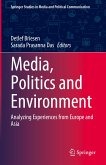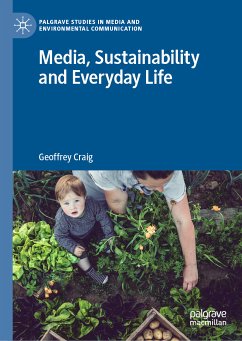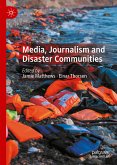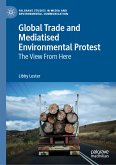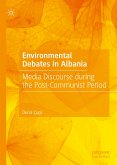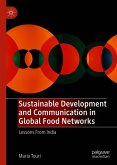Environment, Media, and Popular Culture in Southeast Asia (eBook, PDF)
Redaktion: Telles, Jason Paolo; Dreisbach, Jeconiah Louis; Ryan, John Charles


Alle Infos zum eBook verschenken

Environment, Media, and Popular Culture in Southeast Asia (eBook, PDF)
Redaktion: Telles, Jason Paolo; Dreisbach, Jeconiah Louis; Ryan, John Charles
- Format: PDF
- Merkliste
- Auf die Merkliste
- Bewerten Bewerten
- Teilen
- Produkt teilen
- Produkterinnerung
- Produkterinnerung

Hier können Sie sich einloggen

Bitte loggen Sie sich zunächst in Ihr Kundenkonto ein oder registrieren Sie sich bei bücher.de, um das eBook-Abo tolino select nutzen zu können.
This book addresses the increasingly important subject of ecomedia by critically examining the interconnections between environment, ecology, media forms, and popular culture in the Southeast Asian region, exploring methods such as textual analysis, thematic analysis, content analysis, participatory ethnography, auto ethnography, and semi-structured interviewing. It is divided into four sections: I. Activism, Environment, and Indigeneity; II. Political, Ecologies and Urban Spaces; III. Narratives, Discourses, and Aesthetics; and IV. Imperialism, Nationalism, and Islands, covering topics such…mehr
- Geräte: PC
- ohne Kopierschutz
- eBook Hilfe
- Größe: 7.31MB
![Media, Politics and Environment (eBook, PDF) Media, Politics and Environment (eBook, PDF)]() Media, Politics and Environment (eBook, PDF)121,95 €
Media, Politics and Environment (eBook, PDF)121,95 €![Media, Sustainability and Everyday Life (eBook, PDF) Media, Sustainability and Everyday Life (eBook, PDF)]() Geoffrey CraigMedia, Sustainability and Everyday Life (eBook, PDF)97,95 €
Geoffrey CraigMedia, Sustainability and Everyday Life (eBook, PDF)97,95 €![Media, Journalism and Disaster Communities (eBook, PDF) Media, Journalism and Disaster Communities (eBook, PDF)]() Media, Journalism and Disaster Communities (eBook, PDF)73,95 €
Media, Journalism and Disaster Communities (eBook, PDF)73,95 €![Ecologies of Guilt in Environmental Rhetorics (eBook, PDF) Ecologies of Guilt in Environmental Rhetorics (eBook, PDF)]() Tim JensenEcologies of Guilt in Environmental Rhetorics (eBook, PDF)53,95 €
Tim JensenEcologies of Guilt in Environmental Rhetorics (eBook, PDF)53,95 €![Global Trade and Mediatised Environmental Protest (eBook, PDF) Global Trade and Mediatised Environmental Protest (eBook, PDF)]() Libby LesterGlobal Trade and Mediatised Environmental Protest (eBook, PDF)40,95 €
Libby LesterGlobal Trade and Mediatised Environmental Protest (eBook, PDF)40,95 €![Environmental Debates in Albania (eBook, PDF) Environmental Debates in Albania (eBook, PDF)]() Deniz ÇupiEnvironmental Debates in Albania (eBook, PDF)97,95 €
Deniz ÇupiEnvironmental Debates in Albania (eBook, PDF)97,95 €![Sustainable Development and Communication in Global Food Networks (eBook, PDF) Sustainable Development and Communication in Global Food Networks (eBook, PDF)]() Maria TouriSustainable Development and Communication in Global Food Networks (eBook, PDF)40,95 €
Maria TouriSustainable Development and Communication in Global Food Networks (eBook, PDF)40,95 €-
-
-
Dieser Download kann aus rechtlichen Gründen nur mit Rechnungsadresse in A, B, BG, CY, CZ, D, DK, EW, E, FIN, F, GR, HR, H, IRL, I, LT, L, LR, M, NL, PL, P, R, S, SLO, SK ausgeliefert werden.
- Produktdetails
- Verlag: Springer Nature Singapore
- Seitenzahl: 348
- Erscheinungstermin: 30. Mai 2022
- Englisch
- ISBN-13: 9789811911309
- Artikelnr.: 64115696
- Verlag: Springer Nature Singapore
- Seitenzahl: 348
- Erscheinungstermin: 30. Mai 2022
- Englisch
- ISBN-13: 9789811911309
- Artikelnr.: 64115696
- Herstellerkennzeichnung Die Herstellerinformationen sind derzeit nicht verfügbar.

